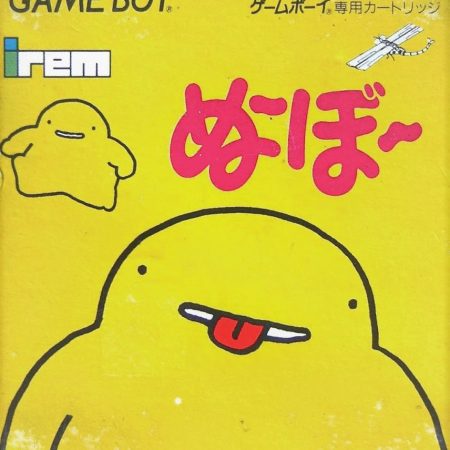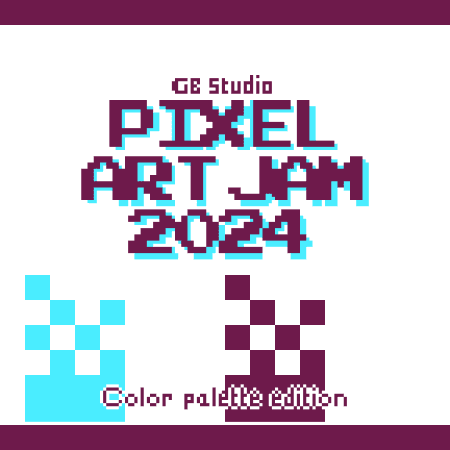Through all the years Nintendo was officially licensing games for the Game Boy, there were a multitude of fantastic releases that would forever be fondly remembered by young and old alike. But for every Tetris, Super Mario Land and Pokemon Red, Yellow or Blue, there were umpteen more titles that would find themselves falling through the cracks of time, destined to be relegated to only the most avid of collectors’ display cases. For Japan exclusive titles, the language barrier only served to ensure many more otherwise brilliant and unique games rarely circulated beyond the country’s shores. Luckily, thanks to the internet, many of these forgotten gems have found a new lease on life and I am delighted to share one of the more obscure Japanese exclusive Game Boy titles with you here!
Enter Noobow, a game developed by Irem (the same team that brought us R-type) and released exclusively in Japan in late 1992. It has since received the fan translation treatment and, even though the game play itself is purely visual, an English version is now floating around if you want to experience the story too (you do, it’s wonderfully adorable).
Noobow is a very simple puzzle game that features, of all things, the mascot of a Japanese chocolate bar manufacturer of the same name. On a side note, you can find some of the old Noobow commercials on YouTube. They have aged like fine wine.
You play as the portly, pudgy Noobow, traveling through an extremely cute and charming land, solving puzzles in order to help its many animal citizens, who are all experiencing various issues relating to extreme weather conditions. This is, of course, because the sun and a typhoon are having a little disagreement and throwing their weight around.
Through seven main chapters (and a bonus chapter featuring a guest appearance by a very well known holiday figure), the player will solve various puzzles to help, among other things, a baby whale reunite with her mother, some moles cool off in the midst of a drought and Mr Squirrel escape from the winter chills.
The puzzles themselves are extremely straightforward. If you are anything more than a newcomer to puzzle games then you will be breezing through Noobow in no more than an hour. But this brings us to the topic I wish to discuss in this article. For the vast majority of people that will play and complete Noobow, the puzzles won’t be the driving force behind what makes this game engaging; it will be the experience at large.
The main mechanic, picking objects up and placing them down, usually leads to one of two outcomes. Noobow can either climb up or down a platform as a result of stacking blocks in a particular configuration or an object is given to an NPC, both of which allows the player to progress through the story.
In most cases, the objects you use, be it a parachute, a bucket or an acorn, are single use items. The player will often find themselves scratching their heads for a very brief moment, thinking ‘what am I supposed to do with a stick?’ But because the answer to the puzzle is never more than a screen or two away and there is only one thing to do with the item and the item disappears once you have no more need for it, the player can solve the puzzle through trial and error pretty much the first time in every case.
All of this puzzle solving however, almost amounts to simple busy work. The real prize is meeting the cast of adorable animals and seeing what they do when you interact with them. Take, for example, a scenario where a dog blocks your way and he just won’t budge… but oh, what’s this? A stick just happens to be right here! Well, let’s pick it up and press ‘A’ and see what happens.
Noobow throws the stick and the dog runs off, eager to catch it, thereby clearing the path. That is the first and last time Noobow will throw a stick in the game.
This unique outcome puzzle design occurs often throughout the game and, in most cases, this would lead to very negative outcomes for the player experience. Let me explain: Imagine if you played Super Mario Land and every enemy only appeared once. There was only one instance of the goombo, only one instance of the bombshell koopa, only one instance of bullet biff etc. The Player would never be able to learn what to expect through repetition and the result would be a very frustrating Mario game indeed!
The only reason why this kind of unique puzzle design works in a game such as Noobow, is precisely because the answer to ‘what am I supposed to do with a stick?’ is right there in front of the player to see. If the problems are all unique, any more puzzle complexity and the player experience would shift from that of delight to a very confusing one indeed. What’s more, the player can’t fall off a ledge, can’t die and all actions are reversible. So, in other words, there is no fail state. This means it’s only a matter of time before the player is progressing through the game again.
Take for example the puzzle shown in the screenshots below. Noobow sees an acorn in a tree, he will need to climb the tree just like he would a ladder (again, the first and last time the player will climb a tree), then give the acorn to a crow on the next screen, who will spit out a jack hammer in return, thereby allowing Noobow to break a stone block and progress. Does any of that make a lick of sense? Nope, at least not to me! All I know is, I want to see what happens next!
With their components being so seemingly disparate, it’s a good thing the developers kept these puzzles’ solutions close by and with very minimal steps. Keeping the game this easy ensures even a beginner player won’t have an issue finishing Noobow and can focus instead on enjoying the strange and wonderful stories and characters that can be found within this delightfully unique Game Boy title.
So if you are thinking of focusing on making a game that champions the player experience over mechanics, consider taking a leaf out of Noobow’s book, and make sure you don’t go too hard on the player!

Independent Games Designer, Artist, Film Enthusiast and Full-time Dad (he/him). Check out my games here!





